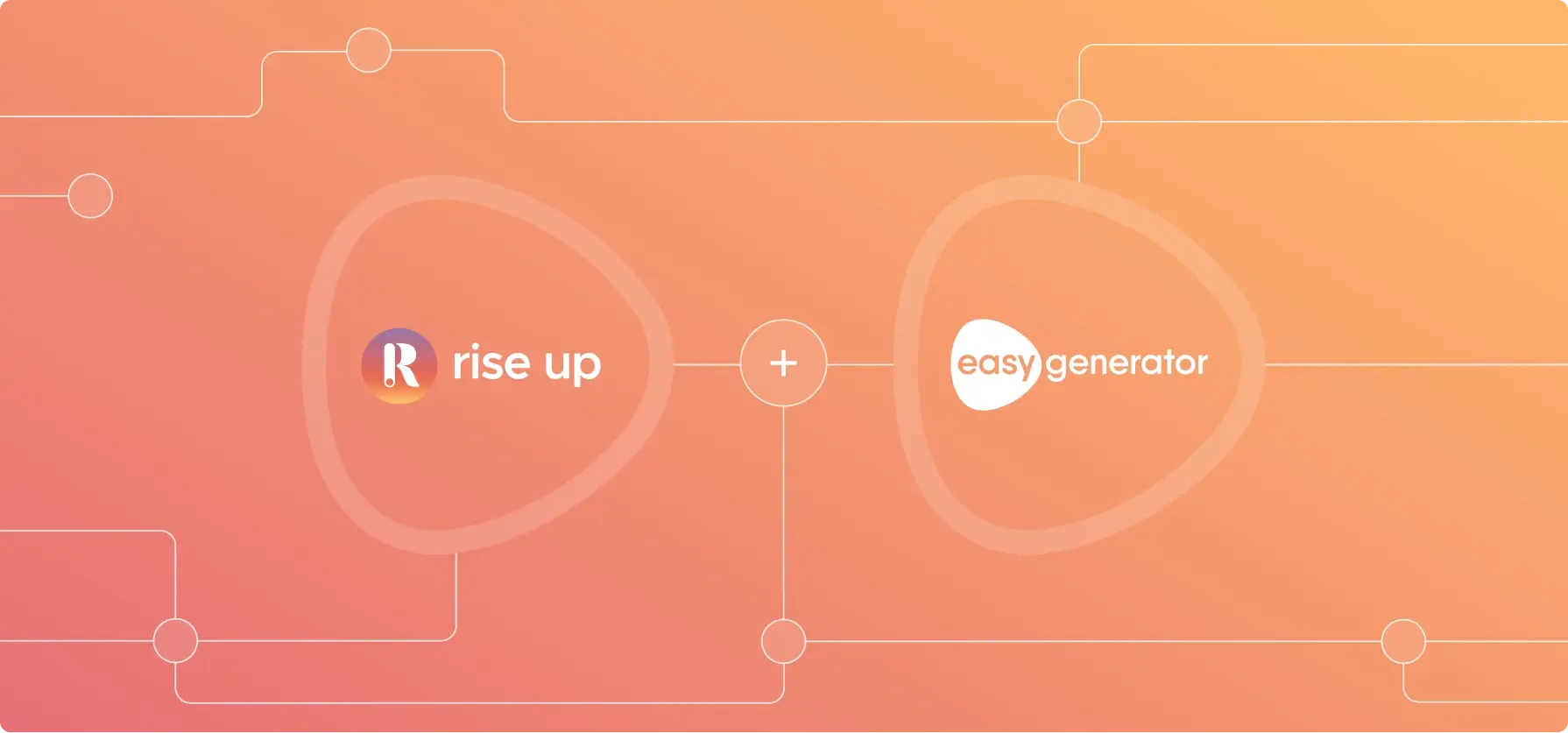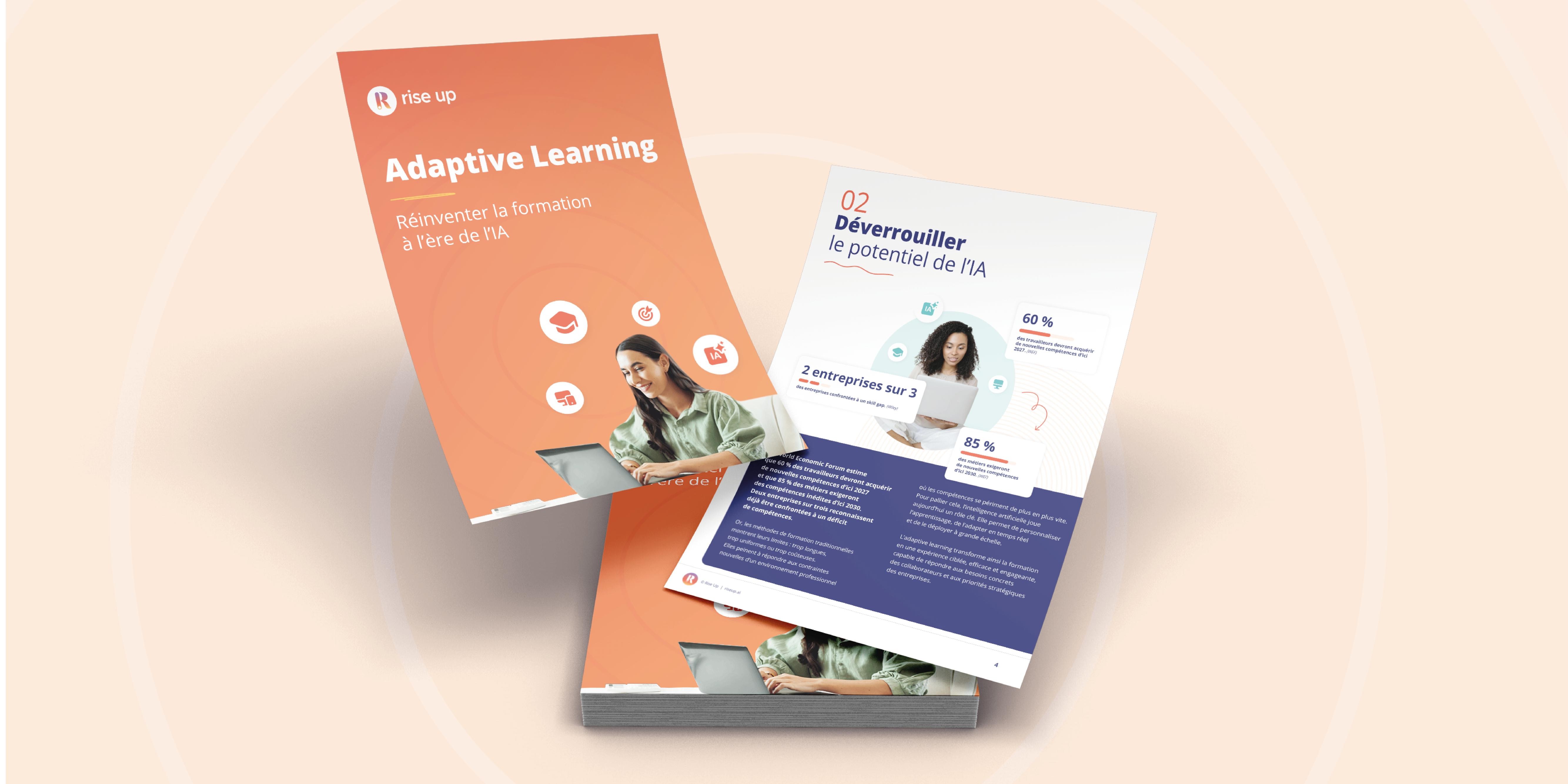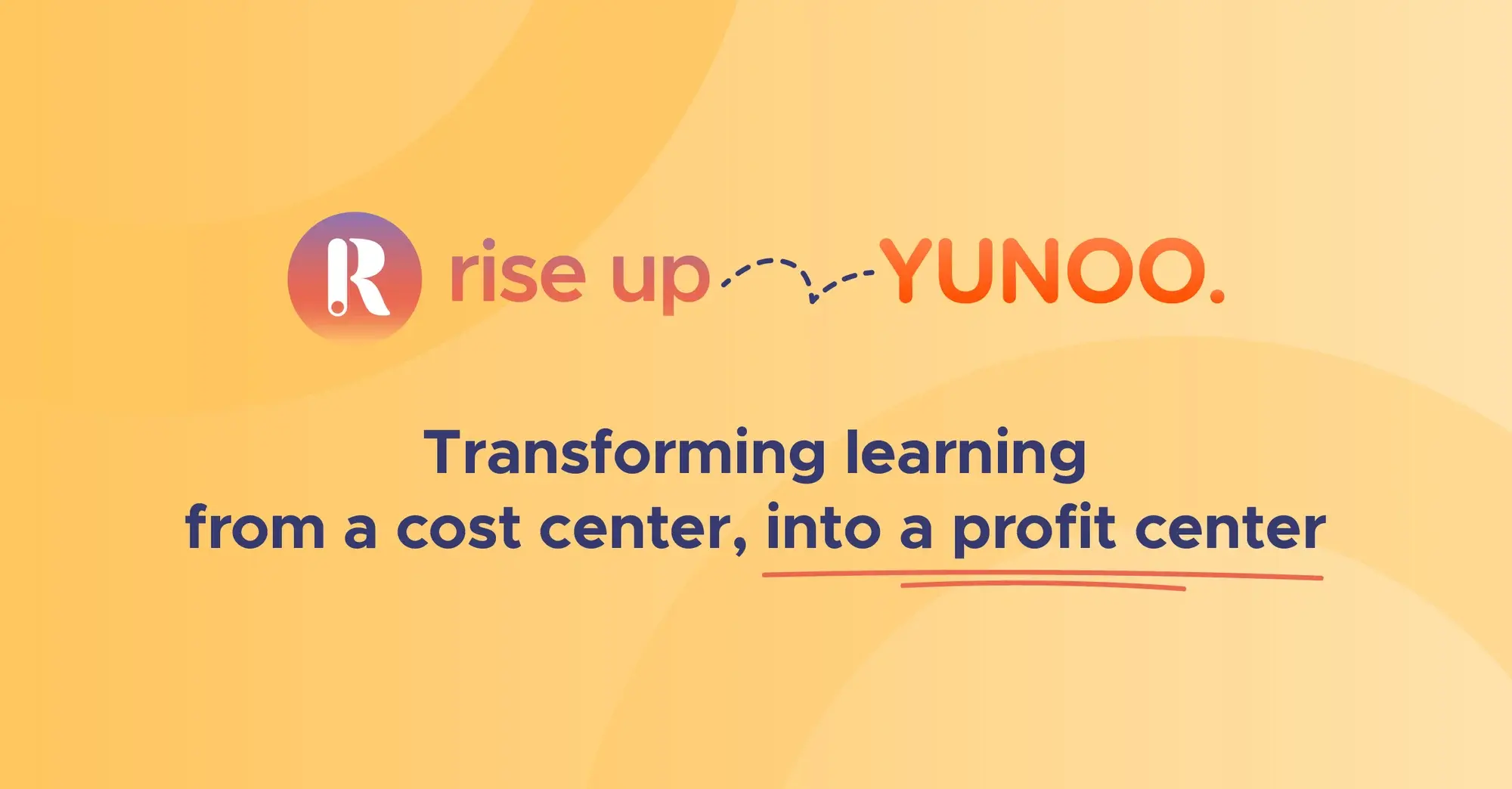Why and how learning and development must change to empower a hybrid world
5 minutes of reading | 2023-05-22
Key points from our discussion session at the Learning Technologies 2023 conference.
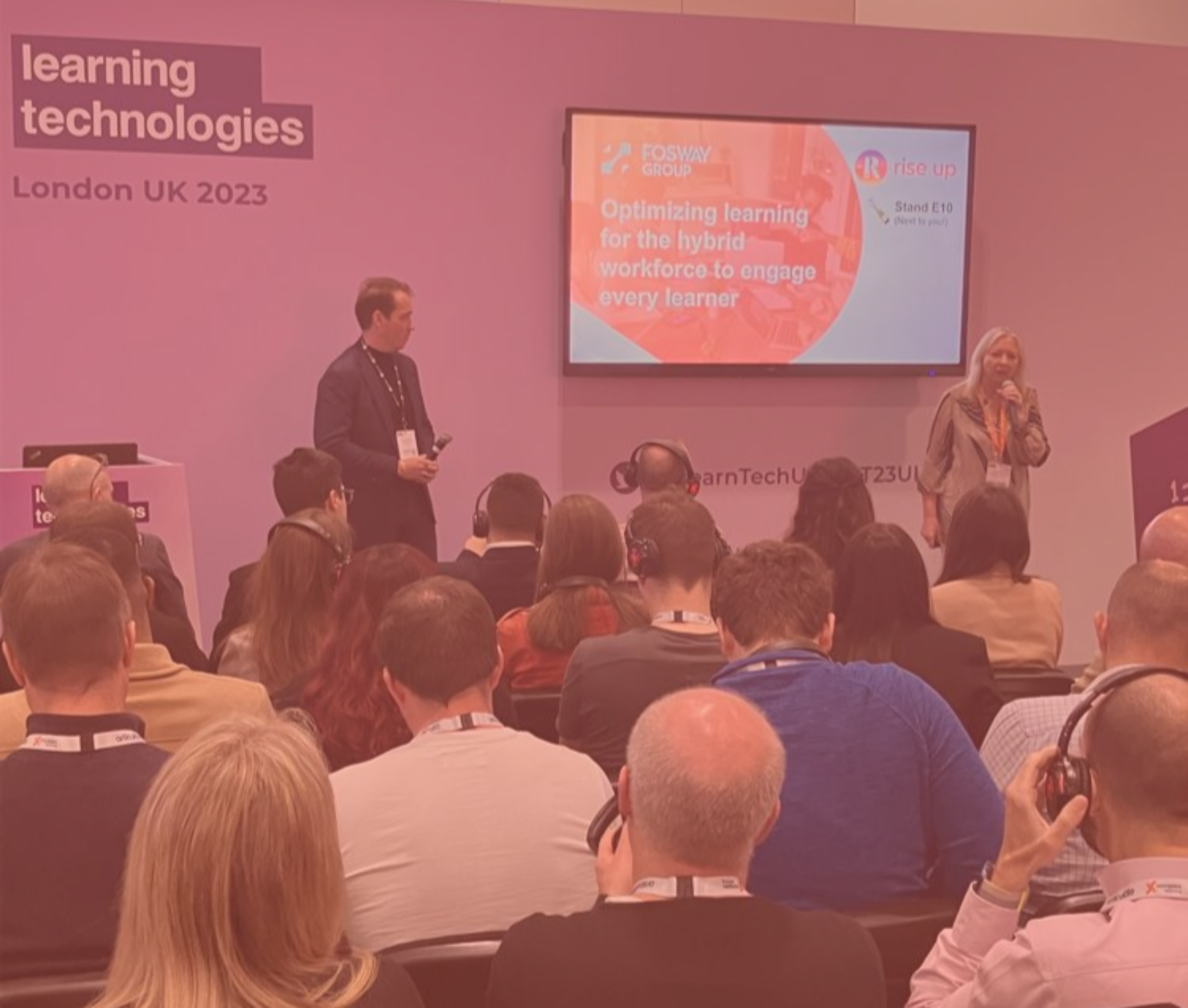
In our previous post from Learning Technologies 2023, we summarized our top conference takeaways. In our own discussion session – featuring Rise Up CEO and co-Founder Arnaud Blachon and Fosway Group’s Senior Analyst Fiona Leteney – we explored the “how and why” of optimizing learning to engage every learner in a hybrid workforce.
Fosway’s Fiona Leteney outlined four market trends that affect L&D delivery.
1. Equitable access and inclusion are key in the hybrid workplace
When your workforce is dispersed, working at different locations, at different times, and in different situations, it’s essential that the training you provide can be accessed easily and fairly by everyone.
Whether different job roles access L&D material from a comfy work desk on a top-end PC with fast broadband, to a noisy living room on a shared mobile device and flaky 3G, they need to enjoy a consistent learning experience.

That means designing your L&D platform, content, and experience from the ground up without presupposing a classroom or corporate environment. After all, as we heard elsewhere in the conference, 80% of workers don’t have a desk.
2. Real mobile learning is now essential
Away from the company desk and laptop, mobile is the favored device for internet access.
L&D is moving quickly towards a just-in-time model of bite-sized, situation-specific, learning content. For workers in healthcare, hospitality, retail, transport, trades, or personal services, that makes some form of any-place access essential. To deliver learning where it’s most needed – and where it can be immediately exercised – you need a mobile L&D strategy.

Real mobile learning is more than a mobile-friendly web portal. Learning materials and the end-to-end learning experience need to be rethought for a mobile audience on a mobile device. A poor digital experience hinders most cohort-based programs
Mobile screens are smaller and interaction is different but, as Neuroscientist Paul J. Zak has found, immersion can actually be 42% greater on a mobile device (Immersion).
3. A poor digital experience hinders most cohort-based programs
Poor digital experience, however, is a problem for most L&D programs. Too often material is not re-designed or re-built for digital delivery. A re-posted PowerPoint or a poor-quality video of a previous in-class delivery doesn’t cut it anymore. The stop-gaps that got us through Covid are inadequate for a modern, hybrid, digital-savvy workforce.
Done well, mobile, digital L&D can be transformative. It enables learners to learn at their own pace, repeating sections at will to fully understand the content. It means that staff can quickly dip into previous content to refresh skills for a particular task and it energizes learning – placing it properly in the context of work.
4. In hybrid workplaces, collaborative learning must be digital
Often, effective learning needs to be collaborative. Whether it’s colleagues debating questions in the classroom or workmates considering the best approach to a problem, people learn best when they learn together.
So how does that work in a hybrid world, when co-workers are scattered between office and homes? To be effective, collaborative learning should leverage digital collaboration tools, such as Rise Up’s unique integration with Microsoft Teams.
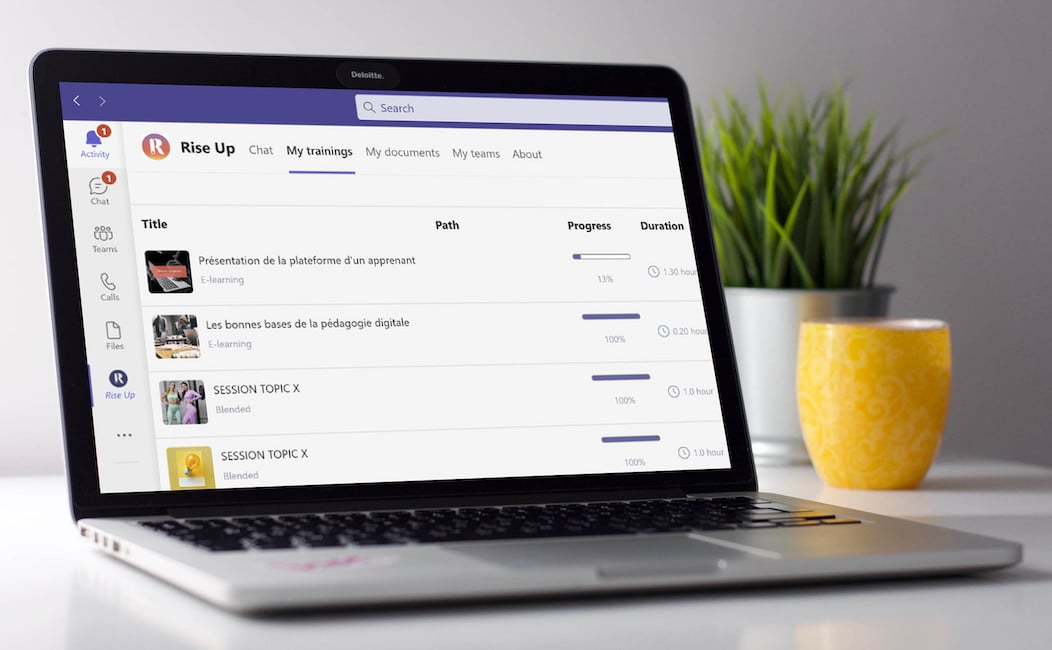
Today’s collaboration tools eliminate unnecessary barriers between fellow learners and their material, making it easier to learn together through social learning.
Learning in the flow of work
On average, how much time does an employee spend on “formal learning”? Just 24 minutes
(Bersin). People say they simply don’t have time to train.
And yet, your staff clearly value training. 94% of employees say they’d stay at a company longer if they felt the organization invested in their career (LinkedIn).
Learning in the Flow of Work resolves this conflict, and it’s central to Rise Up’s LearningOps ethos.
By using the latest technology and thinking mobile, L&D teams can deliver bite-sized, just-in-time microlearning that addresses key skills at the exact point of need. Employees access the training they need, developing new skills and a deeper engagement with their employer.
Domino’s, a Rise Up client, dramatically improved its learning experience using our blended learning solution.
So far, it has delivered over 35,000 hours of training, created a collaborative learning community between its restaurants, and seen a 200% increase in training attendance.
Akkodis saw an 81% retention of knowledge rate using Rise Up’s Teams integration to deliver microlearning modules.
Would you like to discuss how LearningOps could help you deliver learning in the flow of work? Book your LearningOps workshop here.


